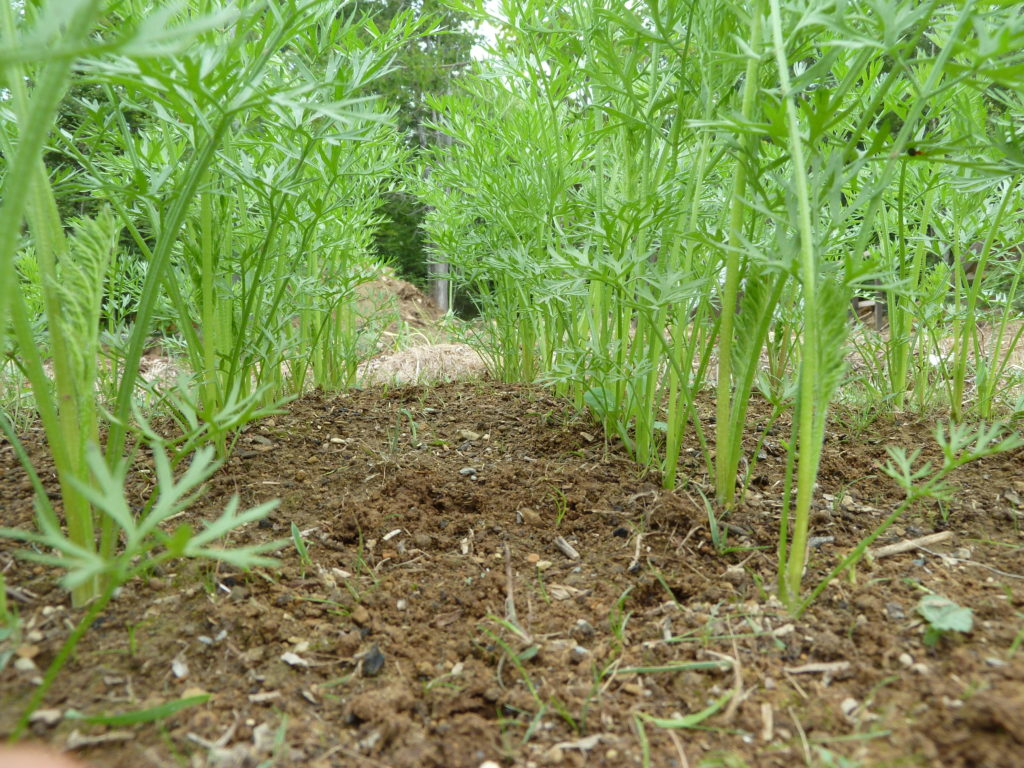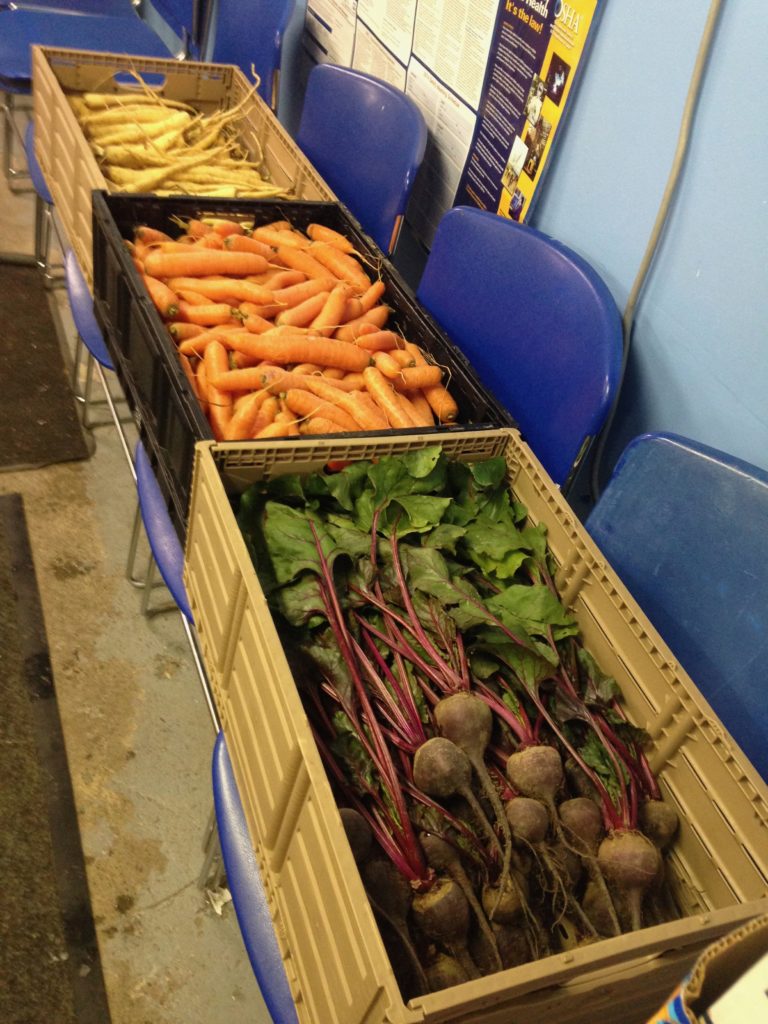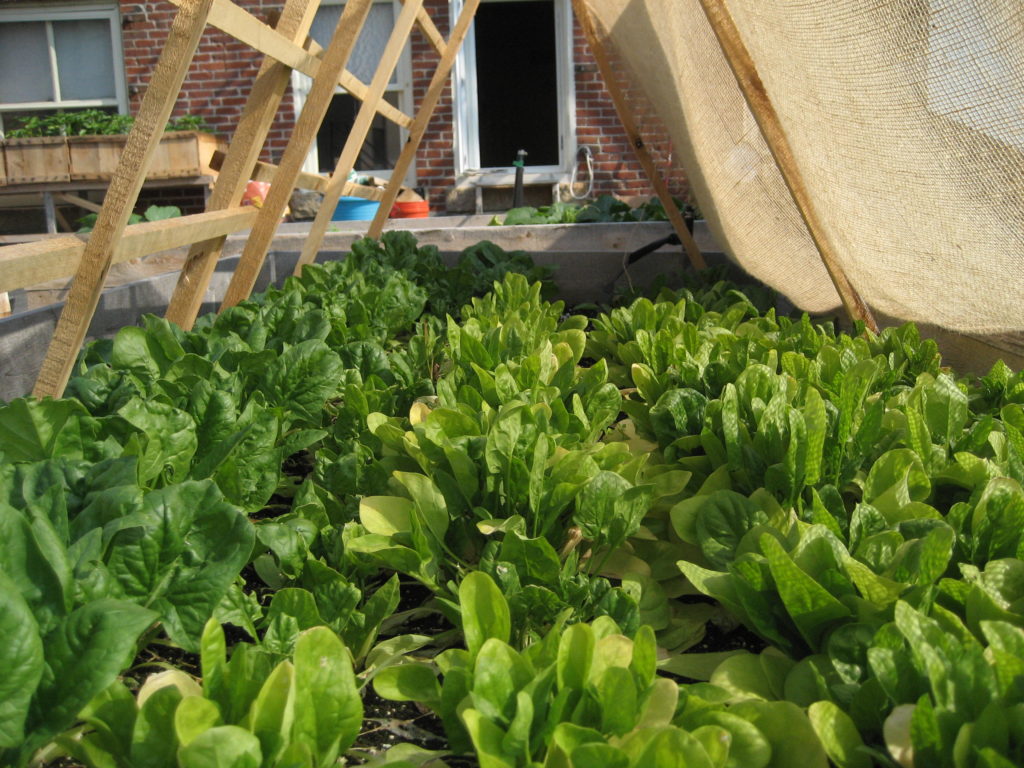How to plant a fall vegetable garden

If you’ve always planted vegetables solely in the spring, planting a fall garden is one easy way to step up your vegetable gardening game. Planted in the middle of the summer, fall gardens keep your plots productive and can supply you with fresh produce late in the season.
“You can get so much more out of your garden,” said Kate Garland, a horticultural professional with the University of Maine Cooperative Extension. “And a lot of things taste better in the fall quite frankly.”
The cool temperatures in late summer and fall add a certain sweetness to some vegetables as they mature, Garland said. She has noticed this with beets, Swiss chard, spinach, carrots, lettuce and other root vegetables and leafy greens.
“We need to rethink the crops we traditionally plant at the end of May,” Garland said, “and consider planting them midsummer instead.”
What are some good fall crops?
Vegetables that make for good fall crops include vegetables that germinate and grow well in mid-summer conditions; vegetables that mature quickly; and vegetables that are cold hardy as they mature.
“Kale, Brussels sprouts, cabbage, broccoli — all of those don’t mind frost as much,” said Annie Klodd, extension educator for fruit and vegetable production at the University of Minnesota. “So you can keep harvesting them into the fall. For Brussels sprouts, we like to harvest those after the first frost.”
In some cases, you may find that vegetables grow better as a fall crop than they did as a spring crop.
“Carrots are a really nice one,” Klodd said. “Sometimes it can be tough for gardeners to get carrots to establish in the spring if its raining a lot or there’s a lot of pest pressure. Sometimes it can be easier to get the seeds to germinate [in July].”
Broccoli is another good example of a crop that may grow better during the second half of the summer.
“[Broccoli] can be really picky about the temperatures that it’s under when it’s maturing,” Klodd said. “If you plant in the spring, sometimes its too hot or cold and broccoli isn’t going to mature correctly. You’ll end up with heads that are too small. We call those ‘button heads.’ Or the heads just kind of bolt and flower immediately. But [in the middle of the summer], we don’t have as much fluctuation in temperature so you may not have as many of those issues.”
If ordering seeds from a catalog or online dealer, look for vegetable varieties that are described as being well suited for fall harvest. And be sure to check to “days to harvest” or “days to maturity” to make sure you have enough time to grow and harvest them before winter sets in.
Other popular fall crops include kohlrabi, cauliflower, green beans, basil, cilantro, peas, collard greens, kale, radishes and turnips.

When to plant a fall garden
When you plant your fall crops will depend on the time it takes for the plant to mature (or “days to harvest”) and predicted first frost date (or ”first freeze date”) in your location. Therefore, planting a fall garden is usually staggered.
“You basically want to be harvesting most of your vegetables before you have your first frost,” Klodd said. “So people just need to think of when they get the first frost in their area and work backwards from there.”
To find your area’s predicted first freeze date, Garland suggests using resources that base their predictions on past weather data. One of the top resources for this is The Old Farmer’s Almanac, which calculates frost dates based on data from the National Oceanic and Atmospheric Administration.
Once you have your area’s predicted frost day, count back the days it takes for each vegetable to mature, then add a little extra time to arrive at your plant date. It’s always best to err on the side of caution unless the plant is especially frost resistant. Also, some plants may take longer to mature than you expect.
“Since the days are getting shorter, some vegetables respond to that and they mature more slowly,” Klodd said. “That happens with peas. So that’s something to consider.”
How to plant a fall vegetable garden

Planting a fall garden is much like planting a spring garden, but with a few differences to consider.
First of all, soil conditions in the middle of the summer are typically drier than they are during the spring. Therefore, you’ll want to be even more vigilant about watering your fall garden. In addition, you may want to sow your seeds a little deeper in the soil, where the moisture lasts longer.
“You’re ensuring your seeds are going to stay moist long enough to imbibe that water and germinate,” Garland explained. “The exception to the rule — because there’s always an exception — are seeds that need light to germinate.”
For those types of plants, you can sow the seeds very lightly or surface sow them, Garland said, then add a light mulch, such as chopped straw, between rows. This will help retain some moisture in the plot.
Also, if using the same plot as you did for your spring garden, it’s a good idea to enrich the soil with fertilizer or compost before planting your fall crops, Klodd said. And you don’t have to wait until you’ve harvested all your spring-sown crops to get started on your fall garden.
“There are things like peas right now that are winding down, and that’s prime real estate right there,” Garland said. “So don’t be afraid to pull [the harvested plant] out or cut the plant at the soil line and plant around the base of them.”
In fact, spring-sown crops and fall crops can briefly overlap in the same space, Garland said. If you time it right, you can plant a fall crop around a spring crop as you’re harvesting it. Then, when the fall vegetables sprout, you can cut down the spring plant (which is past harvest by then) to allow for more space and light for the fall crop.
Another option is to grow fall crop seedlings inside, transplanting them when you’ve completed the harvest of your spring-sown plants. This might be a good option for vegetables that struggle to germinate when its hot, such as spinach, Klodd said.
Tips for growing fall vegetables
When it comes to planting a fall vegetable garden, one of the most common mistakes is simply planting too late, Garland said.
To reduce the risk of frost wiping out your fall vegetables, Garland suggests investing in a season extender device such as a row cover, which will protect your plants from the cold (to a certain extent) and pests.
As the weather gets colder, Garland suggests keeping a close eye on weather forecasts for temperatures that could lead to a first frost. That way you can prepare by either harvesting your vegetables or protecting them with some cover.
“Things like basil I don’t gamble with at all,” Garland said. “I try to harvest it earlier in the season because the [plant’s] tissue is very tender and I don’t want to lose my chance to have pesto. But things like Swiss chard and spinach and any brassicas are very tough and can tolerate quite a bit of cold.”
A few years ago, Garland remembers harvesting beets in Maine in December. Protected with row covers, the beetroots and their exposed greens were unscathed by the cold.
If you find you’re running out of time to plant you fall vegetable garden, Garland suggests trying to grow shoots or microgreens, which are edible plants (including broccoli, popcorn, mustard and radish) that can be harvested after just a few weeks as flavorful and nutritious greens. While these are usually grown indoors, Garland has been experimenting with planting them outside, in the spaces that open up in her garden after other vegetables are harvested.
“They’re good for keeping the area productive and covered as well,” she said. “And they’re ready to harvest in a few weeks, so I can just keep planting them over and over again.”
Cover crops are another option. These are defined as plants that are grown to protect and enrich the soil — but aren’t intended to be harvested. Oats and buckwheat are some of Garland’s favorite fall cover crops.
“Both of those die back in the winter so they don’t come back to haunt you the next year,” Garland said.
And finally, don’t forget to plant garlic in the fall, typically after the first few frosts but before the ground freezes. Garlic requires a period of cold, called vernalization, in order for a clove to separate and form a head of garlic. Left in the ground all winter, the plant will send up tender shoots next spring.
